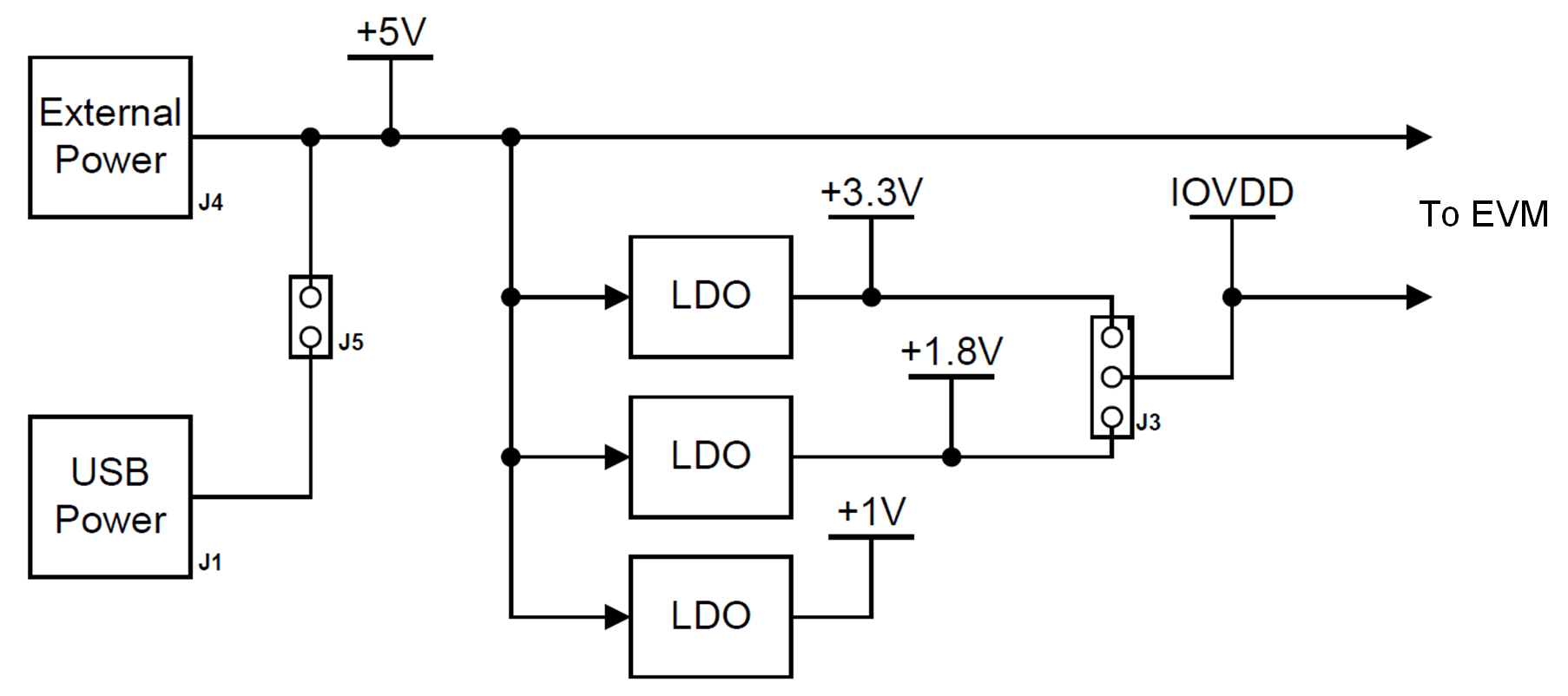SBAU398 March 2022
2.1.2 AC-MB Power Supply
The complete EVM system is powered from a single 5-V power supply. However, the motherboard has different low-dropout regulators (LDOs) integrated that provide the required power supplies to the different blocks of the board. Figure 2-6 shows a block diagram depicting the power structure of the AC-MB.
 Figure 2-6 Power-Supply Distribution of
the AC-MB
Figure 2-6 Power-Supply Distribution of
the AC-MBThe AC-MB can be powered from the host computer by using the USB 5-V power supply (VBUS) by shorting header J5, USB POWER. Additionally, the AC-MB can be powered from an external power supply connected to terminal J4, EXTERNAL POWER. Header J5 must be open for external supply operation. The IOVDD voltage for the digital signals that is provided to the evaluation module is generated on the motherboard from the main power supply (USB or external). The voltage levels available are 1.8 V and 3.3 V, and can be selected via the J3 header IOVDD. For 1.8-V operation, short pins 2 and 3 of header J3; for 3.3-V operation, short pins 1 and 2. When the motherboard is fully powered and the power supplies from the onboard LDOs are correct, the green POWER LED (D3) turns ON. The USB READY LED indicates that a successful USB communication is established between the AC-MB and the host computer.